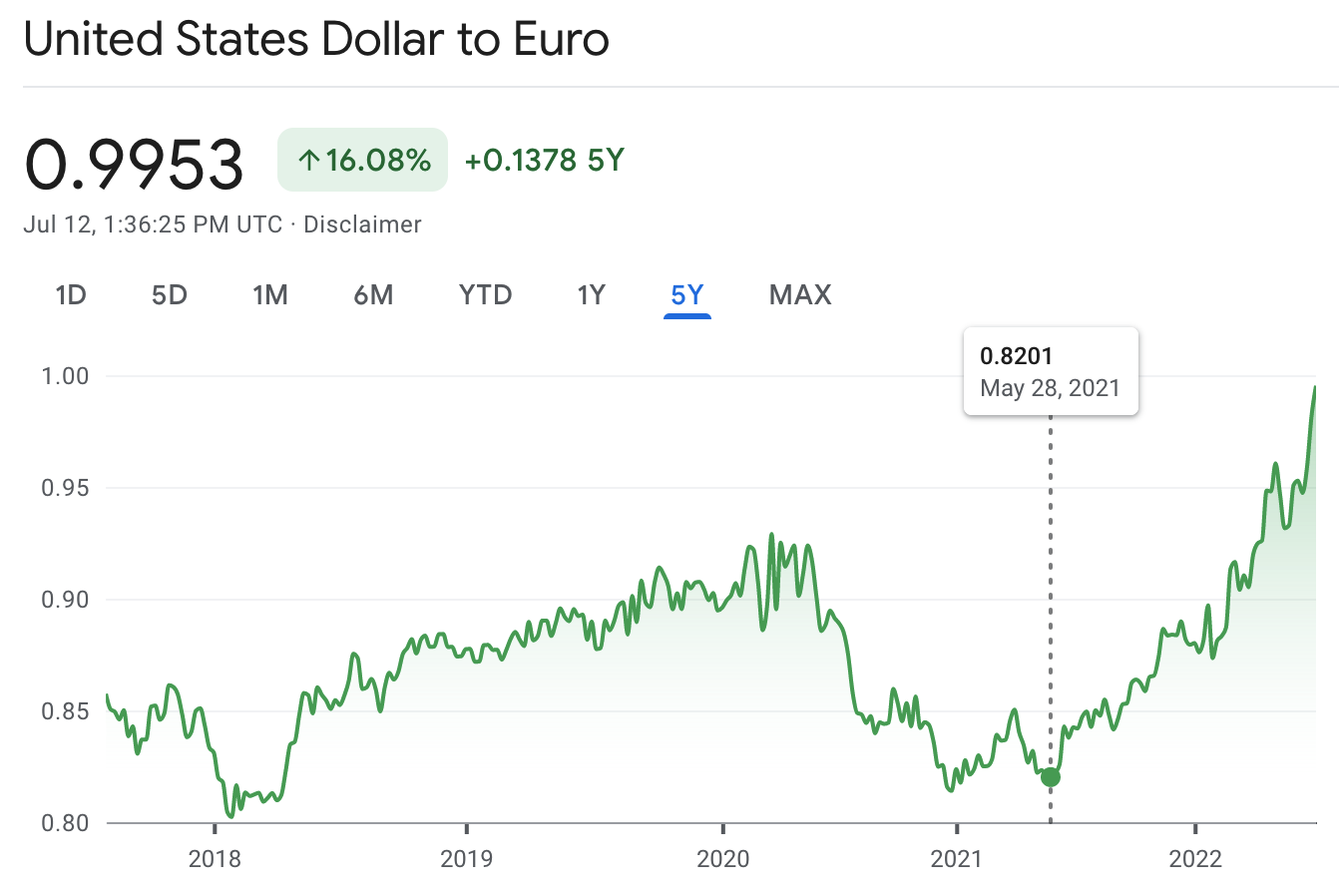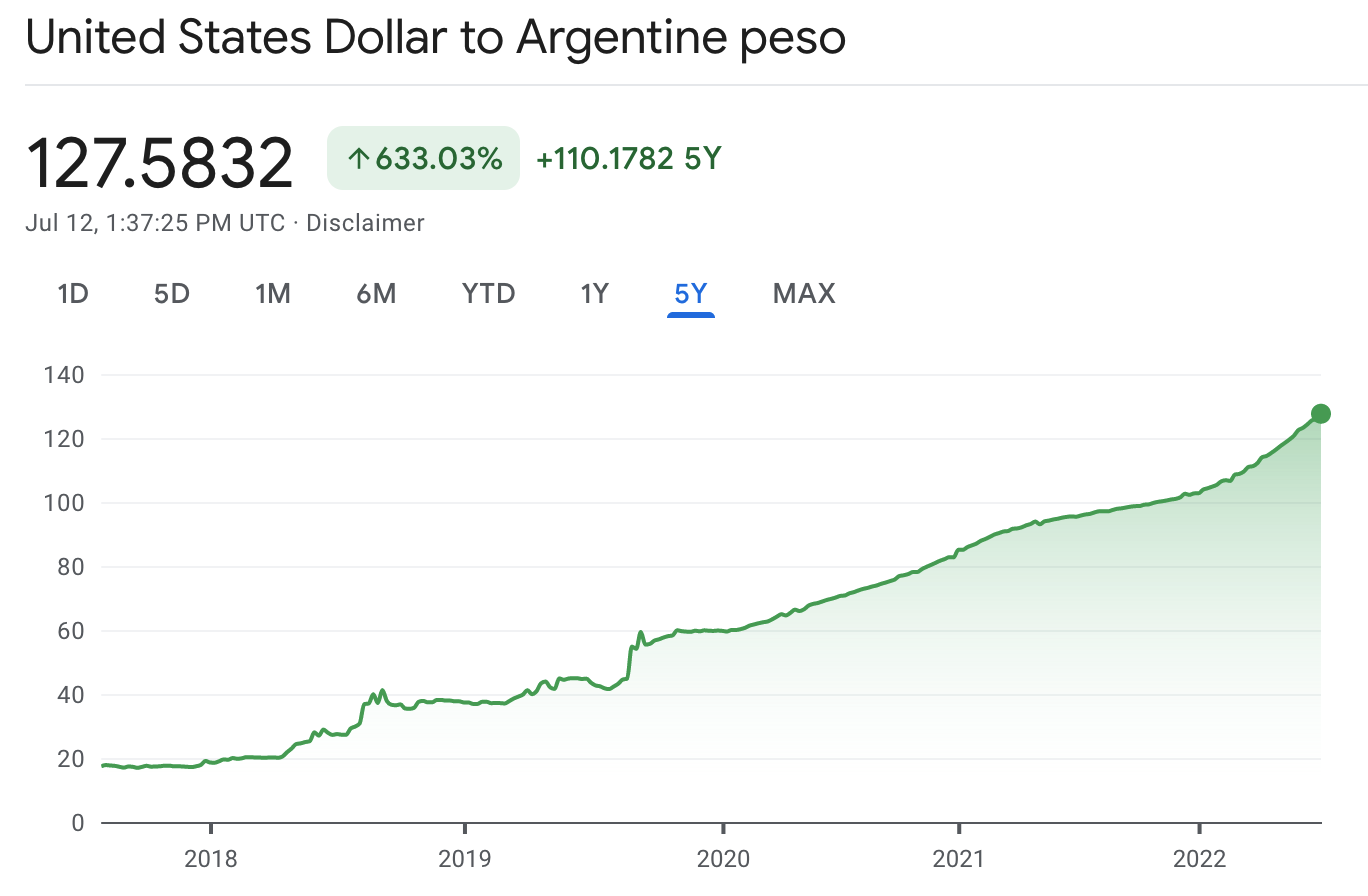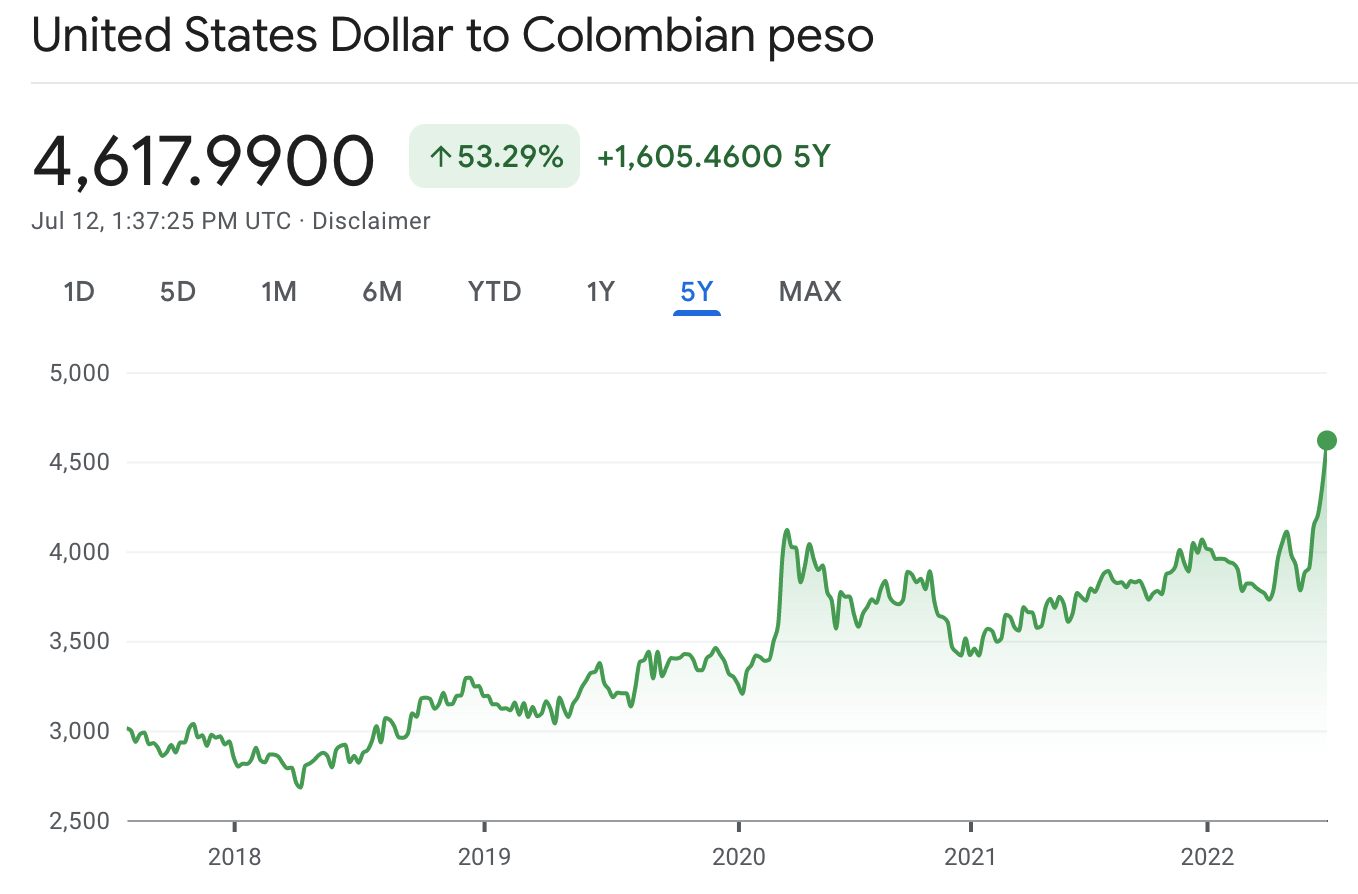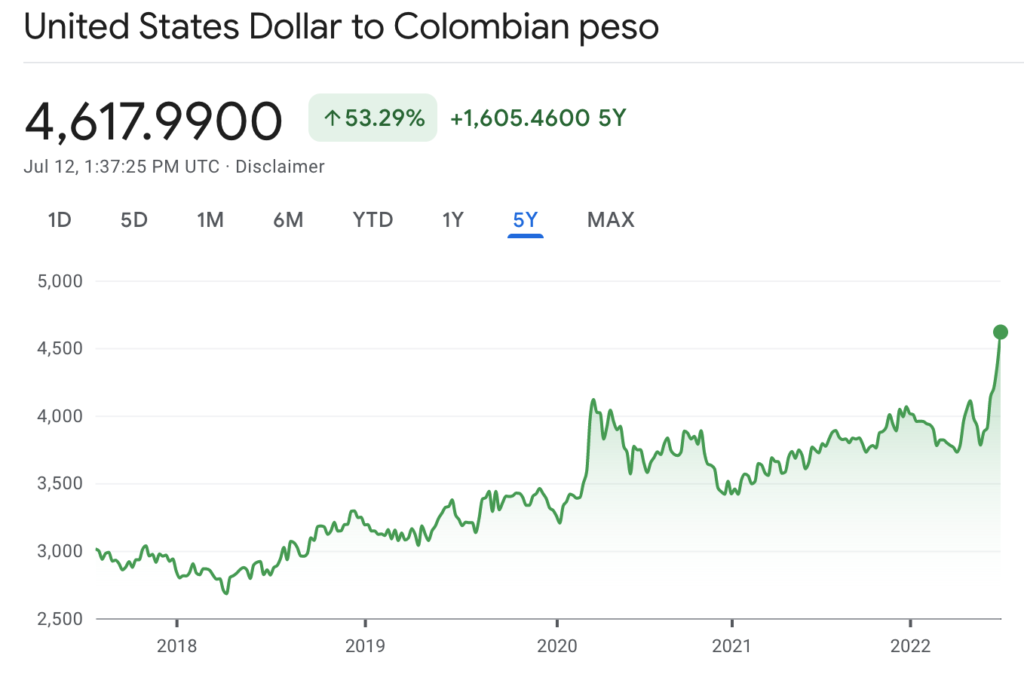Table of Contents
The strengthening of the dollar will give the US an opportunity to leverage Latin America for software development and technology companies that can take advantage of this opportunity will be able to build strong relationships with South American partners. Let’s talk about some ways that you can leverage this opportunity for your business or startup.
The dollar is strengthening due to macroeconomic conditions
El dólar se ha fortalecido en el mundo y osciló en niveles no vistos desde el punto álgido del pánico del mercado en 2020 por el covid-19, lo que muestra la cautela de los inversionistas. Mientras tanto, la moneda común de la zona del euro estuvo a un paso de la paridad con el dólar antes de recuperarse para borrar las pérdidas del día.
The dollar is strengthening due to macroeconomic conditions to levels not since since the Covid-19 panic of early 2020. The Federal Reserve has been raising interest rates, which makes the United States more attractive compared to other countries with lower interest rates. This means that investors are more likely to invest in the U.S., leading to a stronger dollar against other currencies.
In addition, there’s geopolitical risk and high levels of uncertainty in many countries like Ukraine and Russia.
This has impacted even strong currencies like the Euro reaching dollar parity, something that had not happened for over 20 years.

The strong dollar is an opportunity to leverage nearshore software development in Latin America.
Nearshore software development is the concept of outsourcing your project to a company located within a short distance from your office. It’s more cost-effective than outsourcing to another country because you can communicate with them easily through video conferencing, phone calls and emails. You won’t have to fly everyone over for meetings and there are no language barriers since most of their employees will speak English fluently (or at least well enough for communication).
A strong dollar is a great opportunity to leverage nearshoring in Latin America for software development. Some of the countries that have been more impacted recently by the DXY strength this year have been Argentinian peso (-19,3%), Chilean peso (-14,1%) and the Colombian peso (-10,8%). In the meantime the Brasilian reais has tained 3.7% and the Peruvian sol has gained 1%.
Not all is positive, importing things in those countries also becomes more expensive. That means that the tech talent in Latin America need more of their local currency to buy things from the US—like hardware or software developed by US companies. This means their costs of doing business have gone up. So it also means they’ll need more pesos in order to pay their own employees who’ve been working on software projects with American companies and rates may increase a bit.


What are the main strengths of Latin American software development companies?
- Latin America is a hotbed of innovation, technology and creative talent.
- The main strengths of Latin American software developers are their ability to work in a team, their commitment to quality and their ability to learn new technologies.
- They are flexible, hardworking, and fun to work with!
There are hundreds of budding software development outsourcing companies as well as many medium and large ones targeting North America. These companies have varying levels of experience delivering to US companies but most of them can easily handle projects from small businesses all the way up to enterprises with hundreds or thousands of users.
Software development is one of the main industries that benefits from a strong dollar. It means that companies can save money by outsourcing their software development needs to nearshore locations, like Latin America. The economic and political stability in Latin America makes it an ideal region for outsourcing global projects. This makes it an excellent opportunity to leverage your company’s Latin American office or branch as a global hub for software development services. Reach out if you want to chat with an expert about defining a nearshoring strategy.





